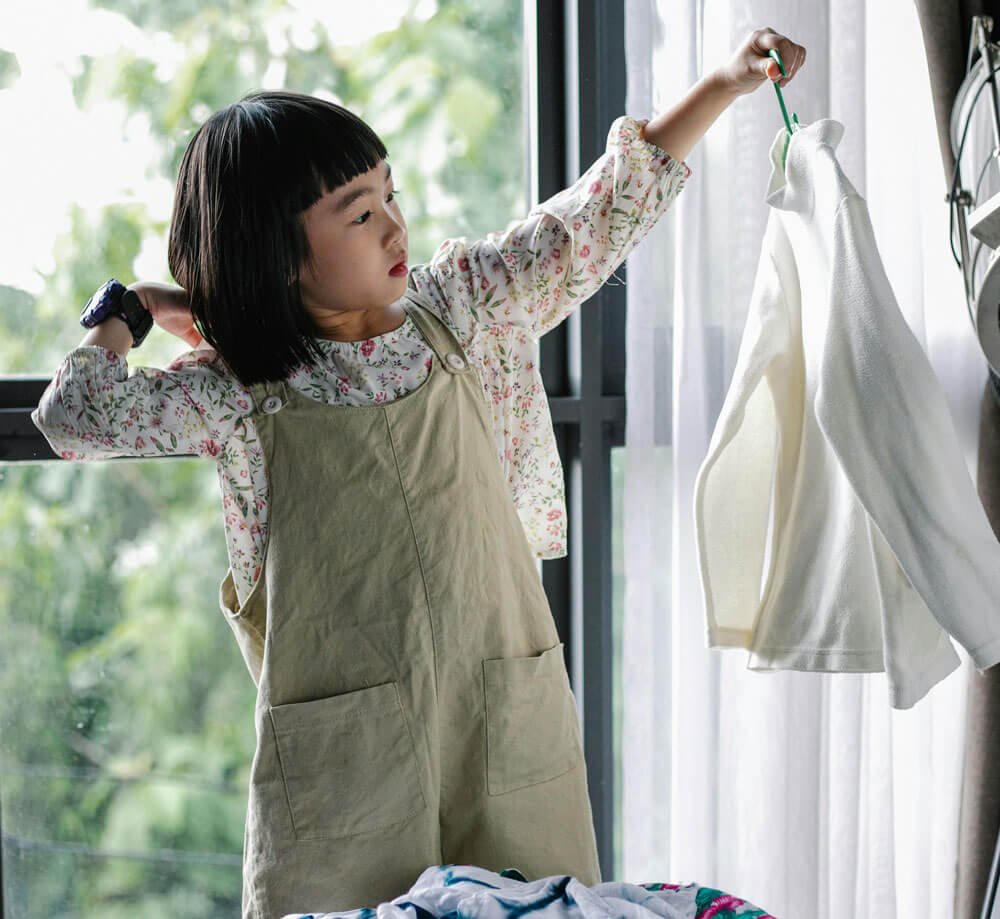The 10 golden rules for decluttering your home
Are you feeling overwhelmed by the clutter in your living space? Do you find yourself constantly searching for things in a chaotic environment? It may be time to embrace the art of decluttering and experience the transformative power it can bring to your home. In this blog post, we will delve into the top 10 golden rules for decluttering, introducing you to the world of home organization and the benefits it can offer.
What is decluttering, and why is it important?
Decluttering is not just about tidying up; it's a process of creating functional, clutter-free spaces that reflect your unique lifestyle and style. It is about transforming chaos into harmony, reclaiming your time, finding peace amidst the chaos, and enjoying a more efficient, stress-free life. Professional home organizers like The Happy Space Co in Hong Kong understand that decluttering goes beyond physical clutter; it involves addressing the habits and systems that contribute to disorganization.
Our unique Habits and Systems approach
At The Happy Space Co, we follow a three-step magic mantra to help you achieve lasting harmony in your living space:
1. Declutter to lighten the load
2. Organize for a fresh start
3. Systemize for lasting harmony
We believe in understanding the root causes of disorganization and working with you to establish new habits and systems that promote long-term orderliness.
How to approach decluttering
Set clear criteria: Establish criteria for what items to keep, donate, sell, or discard. Consider factors such as usefulness, sentimental value, and frequency of use.
Take it room by room: Start decluttering one room at a time to avoid feeling overwhelmed. Focus on a specific area before moving on to the next.
Sort methodically: Divide items into categories (keep, donate, sell, discard) and work through each category systematically to prevent decision fatigue.
Be ruthless: Challenge yourself to let go of items that no longer serve a purpose or align with your current lifestyle. Embrace the mindset of keeping only what truly adds value to your life.
Consider the KonMari Method: Embrace Marie Kondo's philosophy of keeping only items that spark joy. Evaluate each item based on whether it brings positivity and happiness into your life.
Seek external perspective: If you find it challenging to declutter on your own, consider enlisting the help of a professional organizer or a trusted friend/family member for objective guidance.
Top 10 golden rules for decluttering
1. Understand your why
Understanding the underlying motivation behind decluttering is the crucial first step to successful decluttering. When you define your "why," you are setting a clear intention for your decluttering efforts, which can significantly impact your approach and ultimate success.
Reducing stress: Clutter in your living space can contribute to feelings of overwhelm, anxiety, and stress. By decluttering and creating an organized environment, you can alleviate these negative emotions and promote a sense of calm and tranquillity in your home. Imagine walking into a clutter-free room where everything has its place - the peace of mind that comes with an orderly space is invaluable.
Saving money: Clutter often leads to unnecessary purchases or the inability to find items you already own, resulting in duplicate purchases. By decluttering and organizing your belongings, you can better understand what you have and avoid unnecessary spending. Creating a plan to declutter with a focus on saving money can also involve selling or donating items you no longer need, turning clutter into cash or goodwill.
Simplifying your life: A cluttered environment can make daily tasks more challenging, increase decision fatigue, and hinder productivity. Decluttering with the goal of simplifying your life involves streamlining your possessions, optimizing your space, and creating systems that support efficiency and ease. By decluttering and organizing, you can free up mental and physical space, allowing you to focus on what truly matters to you.
Creating a plan around your decluttering goal involves setting specific objectives, establishing a timeline, and identifying areas of focus within your living space. Whether you aim to reduce stress, save money, simplify your life, or achieve all three, understanding your "why" sets the foundation for a purposeful and effective decluttering process.
2. Declutter first
Before diving into the organizing process, it is essential to prioritize decluttering as the initial step in transforming your living space. Decluttering first sets the stage for a more streamlined and efficient organization process by clearing out items that no longer serve a purpose or bring value to your life.
The importance of decluttering first
Clear space: Removing unnecessary items creates physical space within your home, making it easier to assess what you have and plan for effective organization.
Reduce visual clutter: Clutter can overwhelm the visual senses and create a sense of chaos in your environment. Decluttering allows you to create a visually appealing and calming space.
Enhance decision-making: By decluttering items you no longer need or use, you simplify decision-making processes and reduce the cognitive load associated with excess possessions.
Identify organizational needs: Decluttering provides insight into the types of storage solutions and organizational systems required to maintain a tidy space effectively.
3. Organize for ease
After successfully decluttering your living space, the next vital step is effectively organizing the remaining belongings. Organizing is the key to maintaining a clutter-free environment and ensuring that everything has its designated place.
Importance of organizing after decluttering
Maximize space: Organizing allows you to optimize the available space in your home efficiently. You can make the most of your storage areas by assigning specific locations for each item.
Sustain clutter-free zones: Proper organization helps prevent clutter from creeping back into your space. When items are organized, it's easier to notice when things are out of place and take corrective action promptly.
Enhance accessibility: Organizing items in a logical manner improves accessibility and ease of retrieval. You'll spend less time searching for things and more time enjoying your organized space.
Promote peace of mind: A well-organized environment promotes mental clarity and reduces stress. Knowing where everything belongs instills a sense of order and control in your surroundings.
4. Create systems
Establishing effective systems is essential for maintaining organization and preventing clutter build-up over time. By creating designated places for every item, you can streamline daily routines, maximize efficiency, and uphold the tidy environment you worked hard to achieve through decluttering and organizing.
Strategies for creating organizational systems
Group similar items: Designate a specific location for each category of items based on frequency of use, function, or relatedness. This ensures that every item has a designated "home" to return to after use.
Utilize storage solutions: Invest in storage containers, bins, baskets, shelves, and organizers to create designated spaces for different categories of items. Choose storage solutions that fit your aesthetic preferences and space constraints. Make use of vertical storage solutions such as shelves, hooks, and wall-mounted organizers to maximize space utilization. Utilize areas like the back of doors or inside cabinets for additional storage.
Labelling systems: Implement labelling systems to identify the contents of containers or storage areas clearly. Labels help you and others in your household easily locate and return items to their designated spots.
Daily maintenance routines: Establish daily habits of returning items to their designated places after use. Encourage all household members to follow these routines to uphold the system's effectiveness.
Review and adjust regularly: Periodically review your organizational systems to identify areas that may need optimization or adjustment. As your needs change, adapt the systems to accommodate new requirements.
Maintain flexibility: While having designated places is essential, allow for flexibility within your systems to accommodate occasional variations in item placement or storage needs.
Creating systems with designated places for everything in your home lays the foundation for sustained organization and clutter control. Embrace the process of systematizing your living space as a proactive approach to maintaining order, efficiency, and visual harmony throughout your home.
5. Start small and simplify
Beginning the decluttering process by starting small and focusing on one area at a time can be a highly effective strategy to prevent overwhelm, maintain motivation, and achieve tangible progress in organizing your living space. By breaking down the decluttering task into manageable segments, you make the process more approachable and set yourself up for success.
Starting small provides a manageable scope, allowing you to focus on one area at a time without feeling overwhelmed by the entire home. This approach leads to visible progress, motivating you as you witness transformations in each space. By concentrating on one area, you can maintain focus, ensuring thorough decluttering and decision-making. Additionally, starting small helps sustain consistent momentum through short bursts of decluttering sessions, preventing burnout and maintaining motivation.
Strategies for starting small
Choose a specific area: Select a room, closet, or even a single drawer to declutter as your starting point. Begin with a space that feels manageable and achievable within a reasonable timeframe.
Set clear goals: Define specific decluttering goals for the chosen area, such as reducing items by a certain percentage, creating designated storage spaces, or eliminating clutter hotspots.
Allocate time intervals: Schedule short decluttering sessions, such as 15-30 minutes, to work on the selected area. Setting a timer can help you stay focused and make the most of your decluttering time.
Sort methodically: Divide items into categories (keep, donate, discard) and work through each category systematically within the chosen space. Avoid jumping between areas to maintain focus.
Celebrate achievements: Acknowledge and celebrate your progress after decluttering a small area. Recognizing your accomplishments boosts motivation and encourages you to continue with the next decluttering task.
Repeat the process: Once you've successfully decluttered one area, move on to the next small space in your home. Consistently applying the start-small approach will gradually lead to an organized, clutter-free home.
By starting small and focusing on one room or area at a time, you can effectively declutter your living space while maintaining motivation and momentum throughout the process. Embrace the incremental approach to decluttering as a sustainable strategy for achieving long-term organization and creating a harmonious environment in your home.
6. Persistence is key
Persistence plays a crucial role in decluttering, as staying consistent and committed to your efforts is key to achieving and maintaining an organized living space.
Strategies for maintaining persistence
Set realistic goals: Establish achievable decluttering goals and create a timeline for completing tasks. Break down larger projects into smaller milestones to track progress effectively.
Create a routine: Incorporate decluttering sessions into your regular schedule to maintain consistency. Designate specific times for decluttering and organizing to make it a structured part of your routine.
Stay motivated: Find sources of motivation that inspire you to continue decluttering. This could include visualizing your ideal living space, seeking support from family or friends, or rewarding yourself for milestones achieved.
Celebrate small wins: Acknowledge and celebrate each decluttering milestone, no matter how small. Recognizing your progress boosts morale and reinforces the habit of persistence.
Adapt and learn: Be open to learning from challenges or setbacks encountered during the decluttering process. Adjust your approach as needed, learn from experiences, and remain adaptable in your persistence.
Track your progress: Keep a decluttering journal or use before-and-after photos to track your progress over time. Seeing how far you've come can motivate you to persist in achieving your organizational goals.
By embracing persistence as a guiding principle in your decluttering journey, you can cultivate the determination and consistency needed to transform your living space into an organized, clutter-free sanctuary. Stay committed, stay focused, and let persistence drive you toward a more harmonious and stress-free home environment.
7. Get rid of duplicates
Eliminating duplicate items is a fundamental aspect of decluttering that can significantly reduce clutter and streamline your living space. By identifying and removing redundant or excess belongings, you create a more organized environment and make room for the items that truly add value to your life.
Removing duplicates is an essential decluttering rule. It simplifies decision-making and is cost-effective. By decluttering duplicate items, you free up valuable space, enhance the aesthetic appeal of your home, streamline decision-making processes, and avoid unnecessary expenses on storage solutions or maintenance.
By eliminating duplicate items from your living space, you can create a more organized, visually appealing, and functional environment that reflects your priorities and reduces unnecessary clutter.
8. Ask yourself: Would you buy the item now if you didn't already own it?
When considering whether to keep or let go of an item during the decluttering process, asking yourself, "Would you buy the item now if you didn't already own it?" serves as a powerful question to evaluate the value and relevance of possessions in your life.
Self-reflection is vital for evaluating possessions during decluttering, leading to intentional decisions about what to keep. It prompts a reassessment of items' value, encourages mindful consumption, and aids in prioritizing essentials over clutter. This process fosters decision clarity by focusing on present-day relevance and utility, guiding effective decluttering.
Applying the question "Would you buy it now?" involves assessing functionality, emotional attachment, replacement value, quality, and future use. Evaluating items based on their current purpose and sentimental value helps in distinguishing essentials from redundancies. By considering an item's replacement worth and potential future use, you can make informed decluttering choices that align with your lifestyle and preferences.
By incorporating self-reflection and posing the question of whether you would buy an item now if you didn't already own it, you can make informed decisions about what items deserve a place in your living space. This practice encourages intentional decluttering, mindful consumption, and a more purposeful curation of belongings that align with your present needs and values.
9. Where possible, digitize to reduce physical clutter
Digitizing documents and files is a strategic approach to decluttering that offers numerous benefits in reducing physical clutter and optimizing space utilization. By converting paper-based materials into digital formats, you free up valuable storage space and enhance organization, accessibility, and efficiency in managing information.
Enhanced organization through structured digital files enables easy retrieval and reduces misplacement risks, fostering efficient document management. Improved accessibility of digital documents enhances productivity, while searchability and indexing features simplify retrieval based on keywords or categories, saving time typically spent searching through physical files.
Strategies for digitization include using scanners for document conversion, utilizing cloud storage for secure access, maintaining an organized digital filing system mirroring physical files, implementing backup measures for data security, securely disposing of physical copies to prevent clutter, and leveraging automation tools for streamlined digitization processes and enhanced efficiency.
By embracing digitization as a decluttering strategy, you can transform your document management practices, reduce physical clutter, and establish a streamlined and efficient system for storing and accessing information. The transition to a digital environment not only optimizes space but also enhances organization, accessibility, and productivity in managing documents for a more streamlined and clutter-free living or working space.
10. Avoid maybe piles
Be decisive about what you need and what you don't need.
Avoiding "maybe piles" during decluttering is essential for making decisive decisions about items you need and those you don't. Indecision can lead to clutter accumulation and hinder the decluttering process. By being decisive, you streamline your possessions, create a more organized living space, and reduce decision fatigue in the future. Remember, decluttering is not about wastage; it's an opportunity to give unwanted items a new purpose. Consider selling items in good condition, donating them to those in need, upcycling for creative projects, or recycling to minimize environmental impact. This mindful approach ensures that items no longer serving a purpose in your life can benefit others or be repurposed sustainably, aligning with a more conscious and purposeful lifestyle.
After completing your decluttering journey, make sure to remove the decluttered items from your home promptly to prevent them from re-entering your living space.
By following these 10 golden rules for decluttering and embracing the art of letting go, you can transform your home into a haven of organization, peace, and creativity. Start your decluttering journey today and experience the joy of a tidy and organized living space with The Happy Space Co in Hong Kong.
Did you know we offer virtual organizing sessions to help you declutter? Get in touch to see if it’s the right fit for you.
Read more tips for decluttering in this Apartment Guide article, featuring the Happy Space Co!
Learn more about how The Happy Space Co can help you create a home haven




